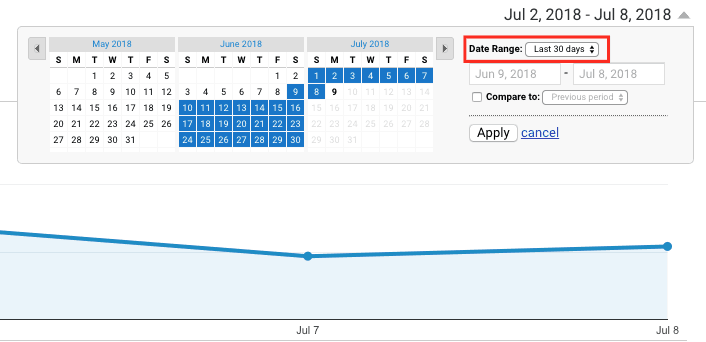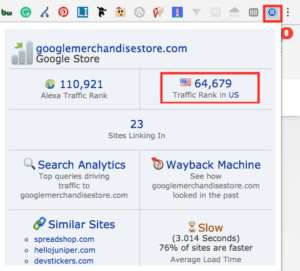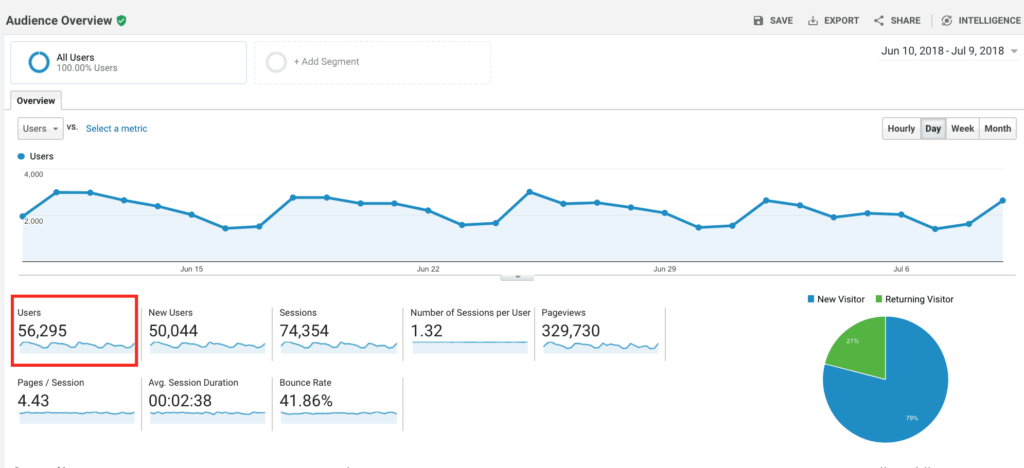Are Traffic Estimator Tools Accurate?

Ever wondered how much traffic a competitor gets? Well, there are many web traffic estimator tools available. But the question is – are these tools accurate in predicting a website’s traffic?
Defining Traffic
Since there are many ways to measure website traffic (sources, page views, visits, etc), it makes sense to first define what we are referring to when we talk about “website traffic”.
Two main types of Traffic
Obviously, there are many sources of traffic. However, for our concerns, there are two main types of website traffic to look at when spying on competitors:
- Organic Traffic: This is the most important metric for inbound marketing (SEO analysis, content marketing, etc). Organic traffic is traffic that the website receives through organic search. These are people that type in certain queries into Google or another search engine and land on a page that answers their query.
- Paid Traffic: The other traffic source is traffic brought by CPC (Google AdWords). This is the traffic where the site owner paid for each click. It makes sense to look at this data if you also want to engage in AdWords, or if you just want to gain an insight into what their high converting “money” keywords might be.
When looking at traffic estimation tools, you’ll often you’ll see a mix of paid traffic and organic traffic from a website. Other times, you’ll see only organic traffic. It usually just depends on the niche or website (whether they doing CPC).

For my purposes on gaining insight into my competitors from an SEO standpoint, or SEO analysis of my own sites, I will primarily look at organic traffic. This is because my main focus is on SEO and content marketing.
Units of Measurement
Since we are mainly focusing on the organic traffic, now the question is – how are these website traffic estimators actually measuring the traffic?
Remember there are many units of measurements when referring to website traffic:
- Unit of measurement: Is it page views, unique visits, or something different?
- Time period: Is it by day, week, month or year?

When playing around with Google Analytics, you probably are baffled at the countless many ways in which you can measure and sort your website’s traffic data.
One of the most common ways to measure traffic is simply to measure the number of visitors to your website, within a given time period (like monthly visits).
Users per month
When using website traffic estimator tools, they typically show you the number of visitors on a website, in a given month. The equivalent metric in Google Analytics is Users.

When you use Google Analytics you have access to a ton of data. You can see how many people are visiting your website, from where and how they’re behaving on your website.
But when we do competitor analysis, we obviously don’t have access to their Analytics data. With traffic estimator tools we typically are limited to just seeing the number of visitors within a given month, with the exception of some tools like similar web, which shows a bit more data.
However, for the purposes of competitor analysis, the monthly visits is usually all you really need. When doing research into another website’s traffic, we don’t necessarily need to know the pageviews and all the other stuff. We simply want to see how many visitors a website has and the keywords associated with that traffic.
How accurate are traffic estimator tools?
My findings

Let’s do a quick test with Google Merchandise Store Demo Account Data to see if we can match up real traffic from Google Analytics and compare it to these traffic estimators.
This analytics data is provided by Google and it is actual real-world analytics data. Google offers this to the public as a learning tool for Google Analytics. The traffic is from Google’s Merchandise Shop and the time period is the last 30 days.

Actual Analytics Traffic: 56,295 Users
- SEMrush: 23,700 Users
- Ahrefs: 23,600 Users
- Similar web: 65,177 Users
- Alexa: 64,679 Users
I chose this because it has a decent amount of traffic site, and it is publicly accessible analytics data (so you can play around with it as well). The reason we want to test on decently higher traffic sites is that, typically, the higher the traffic on the site, the more accurate these website traffic estimators will be. However, if the site gets a lot of traffic, then the measurements seem to vary between tools. So we want a happy medium – not too small of a site, and not too large, to test the accuracy.
Screaming Frog Study
Ideally, we would want to test several sites to get a better understanding of which is the most accurate website traffic estimators. There was actually a blog post that screaming frog did, which included testing a variety of websites. Their testing of 3 tools (SimilarWeb, Ahrefs, SEMrush) found that:
- SimilarWeb was the most accurate, overall
- Ahrefs was the most accurate for large websites
- SEMrush was the least accurate
In my test, Alexa actually did the best. And that’s using the free Alexa extension. The second closest was SimilarWeb, just like screaming frog found.
But does that mean these are the best tools for the job? In my opinion, no. Not necessarily.
It’s about the relative accuracy
Are most of the website traffic estimator tools accurate? The short answer is no. The long answer is: I am less concerned with accuracy as much as I am concerned with the of relative accuracy. If that doesn’t make sense, keep reading.
Let’s get one fact straight. None of these traffic estimation tools are going to be 100% accurate. The reason for this is because the only tool that will give you an exact traffic number is through server logs or an analytics tool like Google Analytics.
However, when we are doing competitor research – looking into someone else’s website, we obviously don’t have access to their analytics data. That is proprietary information that they would not want to share.
How do these “traffic estimator” tools work?

Well, they estimate traffic, using a variety of inputs.
The way most of these tools estimate traffic is by typically creating a mathematical estimation based on the following:
- SERP Position: Where a website ranks for a particular keyword also fluctuates constantly. So this is a moving target.
- Keyword volume: This is sourced from Google, but keep in mind the actual keyword volume is an estimation/ averaged number.
- CTR: Many of these traffic estimator tools use clickstream CTR data, which is a prediction of click-through rate.
- Keyword Database: This is the number of keywords within a website estimators database. The larger the database, the closer to real-world numbers the website estimators typically will get. It can also depend on which companies have a larger database of keywords.
So the lesson is, that each traffic estimator tool will have their own proprietary mathematical calculation based on their own chosen datasets (which may not be exact in its own regard). As such, we have to look at the data from each different company as a relative scale.
What I mean by that is, every tool, whether it’s a keyword volume tool like Google keyword planner, or if its Google Trends, or a website traffic estimation tool – each tool is going to have a different scale to measure that data.
The united states use inches, but most other countries use the metric system (mm & cm). This is how I view different website estimator tools – it’s just a different unit of measurement.
If we check a facebook.com’s traffic on Ahrefs and then checked youtube.com’s on Similar web, we will get confusing results. However, if you check facebook.com on Ahrefs and youtube.com on Ahrefs as well, we now start to see a relative scale. So the trick is to only use one tool when measuring traffic
This is how you should use and understand these website traffic estimator tools, keyword volume tools, etc. You can only compare inches to inches, not inches to centimeters.
In conclusion
So what’s the lesson in all this? The lesson is to choose the website traffic estimation tool you like the most. Whatever tool fits your needs – maybe you need a comprehensive SEO toolset like Ahrefs, SEMrush or Serped.net. Maybe you would rather try free options like the Alexa extension. The point is, choose what you’re comfortable with and only use that tool for traffic comparisons.
Just don’t fool yourself into believing that what you’re seeing is actual true website traffic. Remember – its just an estimation of traffic, calculated by different variables.
However, if you did want to get close to the true website traffic numbers, a great free option is the Alexa extension.

